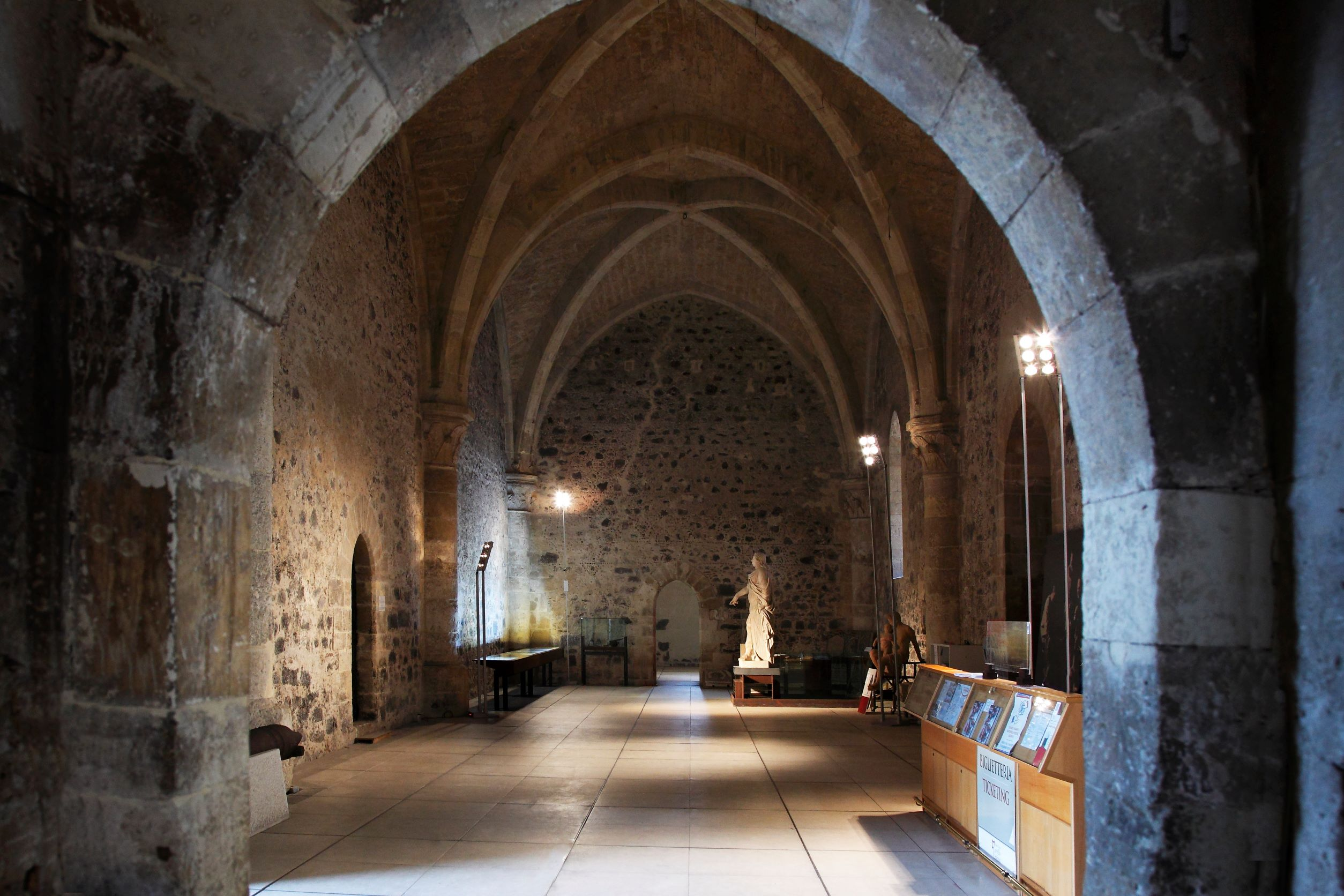

Between marble reliefs, epigraphs, Roman mosaics and Attic vases
Among the material exhibited in the rooms on the ground floor there are valuable marble reliefs, a large collection of epigraphs, fragments of Roman mosaics, a collection of clay statues and as many as 2000 ancient bronzes and numerous Attic vases. An extraordinary "antiquarian" collection admired in the halls of the Museum by visitors of all over the world which, established in the 17th century thanks to the passion and excavations of the noble Ignazio Paternò Castello (V Prince of Biscari) and from the collections of the Benedictine fathers, includes the Marble Plinth (exhibited in Room 2 of the Theater), the large headless Male Torso dating back to the 1st century BC. (exhibited in Room 4 of the Stables), votive terracottas such as the statue of a female offerer (coming from Inessa and exhibited in Room 5 of the Porta del Sale, a series of epigraphs constituting the "Epicum" itinerary.
Room 1 displays the artifacts selected for the display of weapons (sixteenth-century wheel pistols, hunting hatchets from the second half from the 1500s, cases of the master bombardier from the 17th century, powder flasks from 1605 depicting scenes of a religious nature) which were also part of the collection of the Benedictine monks of the monastery of San Nicolò l'Arena, acquired by the Municipality of Catania between 1866, the year of the suppression of the order, and 1868.
Also the epigraphic collection (Rooms 10-11-12 – respectively Greek, Latin and Hebrew) called "Voci di Pietra" is due to the enlightened collecting of Biscari and the Benedictines, and consists of archaeological materials and inscriptions mostly from Sicilian contexts, the result of recoveries and excavations, or from purchases made in the markets of Rome, such as the Christian epigraphs from the catacomb of Domitilla exhibited in Room 10. The collections also include figured Attic vases and Sicilian vases, such as the large chalice crater coming from Camarina depicting Perseus cutting off the Gorgon's head, exhibited in Room 7 called "San Giorgio" due to the chapel built by the Aragonese dedicated to the saint.

Inventory number:
Subject/object:
Author:
Date:
Description:
Material and technique: